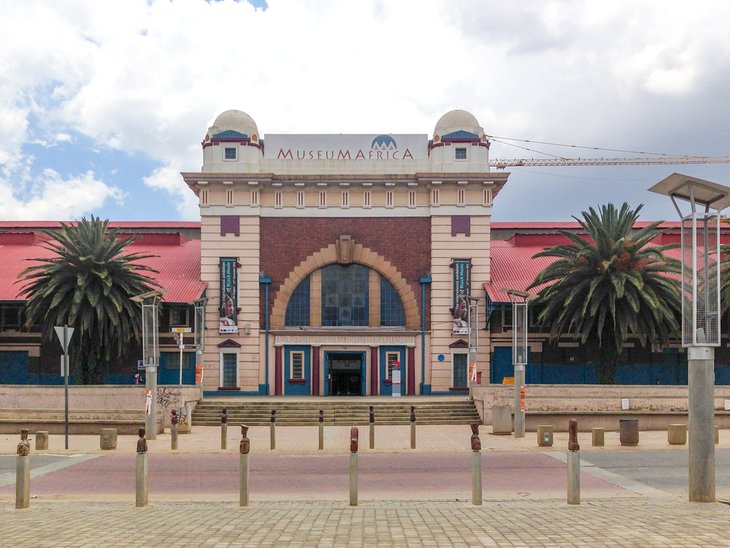The Buzz on Johannesburg North Attractions
The Buzz on Johannesburg North Attractions
Blog Article
Johannesburg North Attractions Things To Know Before You Get This
Table of ContentsThe smart Trick of Johannesburg North Attractions That Nobody is DiscussingSome Known Details About Johannesburg North Attractions Some Of Johannesburg North AttractionsJohannesburg North Attractions Fundamentals ExplainedJohannesburg North Attractions Fundamentals ExplainedMore About Johannesburg North AttractionsThe Only Guide for Johannesburg North Attractions
You need to maintain protection in mind and tourists must remain sharp at all times when in unknown environments. Speak with the citizens when you remain in town to learn about the area you are remaining in. Johannesburg North attractions. When on the road (this does not relate to mall and other protected environments) ideal basic advice is to attempt your ideal to appear like a neighborhood and to avoid showing any kind of kind of wide range
Some Known Factual Statements About Johannesburg North Attractions
Teacher Revil Mason O. J. (Thomson, 1946) explored the Witwatersrand's pre-colonial background. His archaeological job exploded the 'em pty land' misconception, according to which the area was lacking human habitation prior to the arrival of European inhabitants. In his magazines Prehistory of the Transvaal: A Record of Human Task (1962) and Origins of Black People of Johannesburg and the Southern Western Central Transvaal AD 3501880 (1986 ), Teacher Mason showed the degree of social and financial advancement in the area prior to Europeans set foot here.

Not known Facts About Johannesburg North Attractions
He showed the federal government's consent, granted after he had testified keep his discoveries secret. In 1874, small-scale mining operations were started in the Magaliesberg, where an Australian, Henry Lewis, had actually found gold deposits. In 1878, David Wardrop found gold in quartz capillaries at Zwartkop, north of Krugersdorp. In 1881, Stephanus Minnaar came across gold on the farm Kromdraai, near the Cradle of Humankind.
In March 1886, a protrusion (soon to be called the Key Coral reef) was discovered, quite fortuitously, on Gerhardus Oosthuizen's ranch Langlaagte. Some state that the Lancastrian coal miner George Walker discovered this coral reef. One more itinerant English prospector, George Harrison (who had actually previously operated in Australian mines) gotten a prospecting licence in respect of Langlaagte in Might 1886.
He made a decision to carry on in a pursuit for greener pastures, and disposed of his Langlaagte claim for the baronial sum of 10. Alas: below lay the wealthiest goldfield ever found. The discovery of this abundant auriferous reef provoked a gold thrill that indicated the end of agrarian serenity in the southerly Transvaal.
It would, within six years, end up being the largest town in southern Africa. Within a decade, it would make the Z. A. R. until after that an anarchical and insolvent little state the wealthiest nation in Africa. By the turn of the century, the Z. A. R. was to exceed Russia, Australia and the United States of America to come to be the world's leading gold manufacturer, generating greater than a quarter of the globe's gold.
Not known Details About Johannesburg North Attractions
It was referred to as Ferreira's Camp, named after Colonel Ignatius Ferreira. He was a Boer traveler upon whom the British authorities had actually bestowed their website the condition of Friend of one of the most Identified Order of St Michael and St George (entitling him to the post-nominal letters C. M. G.) in appreciation for his duty in the war that had actually deposed the Pedi king Sekhukhune in 1879.
Two other camps were established: Meyer's Camp on the farm Doornfontein, and Paarl Camp. The latter was nicknamed Afrikander Camp; several individuals from the Cape Nest resolved there.

Not known Facts About Johannesburg North Attractions
This name obtained money by word of mouth, such that the State Secretary attested the name to the Mining Commissioner on 9 October 1886. Stands in the village were auctioned on 8 December 1886. While some stands were marketed for 10, others were knocked down for as low as sixpence.
Two years later, these erven were to alter hands for as much as 750 each. The tented camps dwindled as a dorp of corrugated iron structures established and increased north of the mines situated along the Key Coral Reef Roadway. Areas such as Jeppe's Town (where working-class immigrants erected their residences) and Doornfontein (where the upscale new 'Randlords' began to build their opulent houses) were quickly added to the ever-expanding map of the community.
The Best Guide To Johannesburg North Attractions
Apart from the street names, there were no signs of Johannesburg being positioned in a Dutch-speaking country., nearly everybody talked English and even the Government servants resolved one in English, unless they were very first addressed in the Taal (or Reduced Dutch)'.
Britain had a passion in guaranteeing optimal conditions for gold manufacturing on the Witwatersrand, and that the gold was exported to London rather than Berlin an imperative rendered all the much more clamant by the More Bonuses Z. A. click here for info R.'s raising toenadering with Germany. Mine proprietors got on a clash with Head of state Kruger, whose policy of monopolistic concessions (commonly approved to his cronies) protected against mining companies from obtaining supplies of products (particularly dynamite) and work by themselves, cheaper terms
The 7-Second Trick For Johannesburg North Attractions
In 1890, the Volksraad had limited the franchise business to white guys that had actually stayed in the Z. A. R. for fourteen years or longer, therefore disqualifying most of the immigrants (who happened to be the major contributors to the fiscus). Nevertheless, anxiety for the vote was a mere pretense for promoting a various program; the majority of uitlanders concerned themselves as momentary site visitors and had no intention of continuing to be in the Z.
Report this page